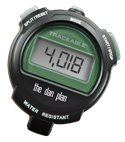Mental Game
I’ve been concurrently reading Dr. Joseph Parent’s Zen Golf and Daniel Coyle’s The Little Book of Talent and have found them to be a solid combo for working on the mental game. I am only about 75 pages into each, but have already picked up on a lot of good ideas to bring to my practice sessions and to use on the course. I definitely recommend both of these short books for anyone interested in improving their game and/or life.
One of the more impactful, yet subtle, thoughts that I found in those books is to broaden your vision. This works in specifics; as in open your eyes to all potential influences on the ball both in the flight path and on the green, to a broader sense in that open eyes are aware of the true nature of the harm a bad shot brings. What is meant by that is that even the worst shot is just one bad shot, it’s not the end of a good round or a mark against you as a human, it’s just one bad shot and can be overcome as soon as you overcome it. It’s easier said than done, but remember to broaden your vision and don’t forget where you are and who you are. Bad shots only define us if we let them.
Today, I played Royal Oaks Country Club in Vancouver, Washington. It’s a fun and challenging track. The all-time low score there is a 63 shot by Tiger Woods. I’ve played once before back on May 26 and loved it. That time around my score was an 86 from the Squirrel tees (AKA blues, or one in front of the tips) and I wrote in my notes that I played very well for that mark. Today, it was 50 degrees early this morning and everything was playing one club longer than it should, the greens had been plugged one week ago so were still bumpy and I played the Squirrel/tip combo tees which are about 300 yards longer and shot an 81. I played consistent golf, but nothing too special; just made shots and kept the ball in play. Still, I felt like a completely different golfer than when I played that course 4 months ago and am proud of how far I have come. For me, this was a good litmus for progress over the summer. There are good rounds and bad rounds, of course, but I could tell how much better every aspect of my game was today compared with May 26.
I realized something about progress at the end of the round today. Gains in ability do not come in smooth constant transitions, but in incremental increases. When working towards a goal we reach each new level by steps and then hold onto that step as tightly as possible until we get comfortable and ready for the next leap. This isn’t exactly groundbreaking information and all the literature talks about the lack of fluidity in improvement, but I realized it in terms of golf handicap. When I registered my first handicap, the number was 12.8. I thought that was low (as in better than my skill level at the time) and was kind of surprised that I was already a preteen handicapper, but I assumed the system knew what it was talking about and trusted in how it was created. For about two months I played at that number and slowly became comfortable with the fact that I was a 12.8, but didn’t make much progress lower. After a while I came to full terms with 12.8 and realized that I was a solid 12.8 handicap golfer. Just at that instant, my handicap dropped to roughly an 10.5. Shocked as I was, I again trusted the system and started playing off 10.5. The same process happened: slowly came to terms and felt comfortable with being an 8.5 and the after a while of “knowing” I was an 8.5 the handi dropped again, this time to 8.5 and then to 7 and so on. The same thing has happened and I am finally getting very confident in my 5.5-6 range, which means I am due for another drop. The increments won’t be as big moving forward, but they will still continue to drop as I continue to improve and work hard. The point? It’s not plateauing, it’s taking time adjusting to your new skill level before moving along to the next step.
Heading out the door to play round two for today. I really just want to golf. I love this.

